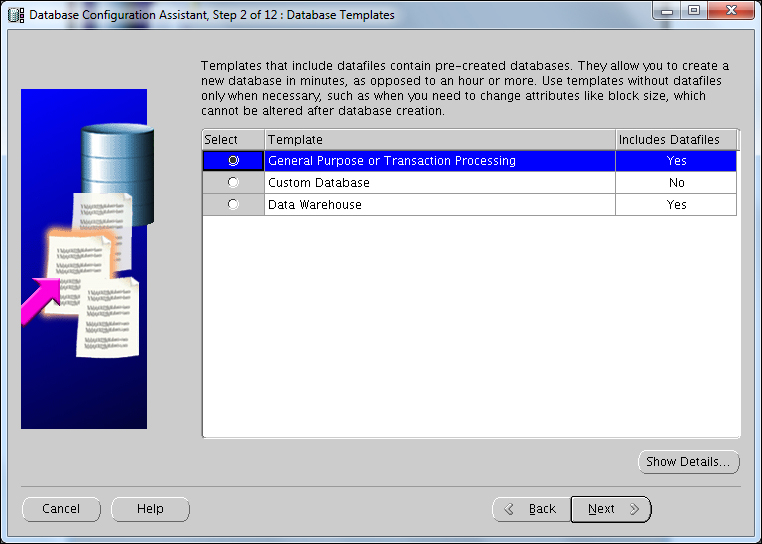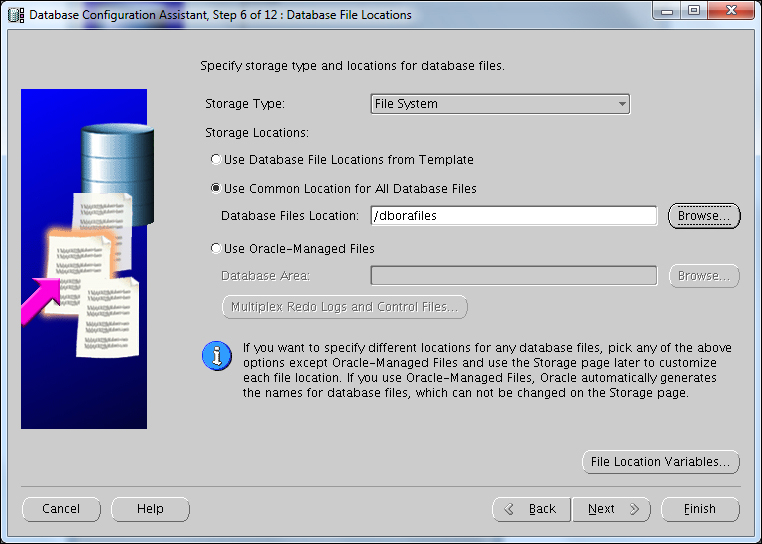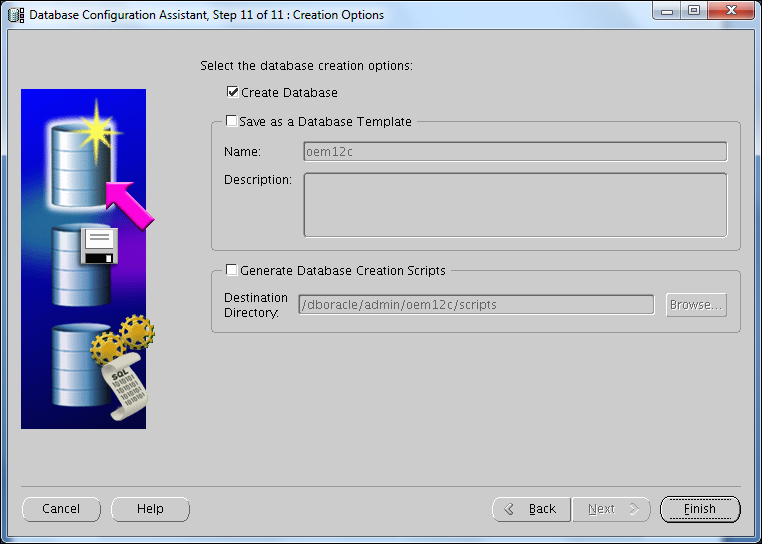An OEM repository is required to store information related to various hosts and targets that need to be monitored via OEM. This recipe describes the steps to create an OEM repository database.
Before you start, ensure that the server is connected to the network, and an SSH or a telnet client is available. Also, make sure you have access to the Unix server as a privileged user.
To create an OEM repository database, perform the following steps:
Connect to the server as the
oracleuser and invoke the Oracle utility Database Configuration Assistant (DBCA).$ cd /dboracle/product/11.2.0/dbhome_1/bin $ TEMP=/u01/tmp $ export TEMP ./dbca
The following window appears after performing the preceding step:

Click on the Next button to continue.
Select the Create a Database option and then click on the Next button.
Select the General Purpose or Transaction Processing option and click on Next.

Enter a fully-qualified domain name value in the Global Database Name field and the SID field, and then click on Next.
In this example,
oem12cis used as the Global Database Name and the SID.Uncheck the Configure Enterprise Manager checkbox, and then click on Next.

Set up a password for the database, and then click on the Next button.
Select the Storage Type field as
File Systemfrom the drop-down list, and then select the Use Common location for All Database Files checkbox. Also, specify the Database Files Location field as/dborafiles.
Click on the Next button.
Select the Flash Recovery Area option, and then click on the Next button.
No sample schemas or custom scripts are required. Click on Next.
Select the Custom option and set SGA size and PGA size. Set SGA Size to, say,
2048MB and PGA Size to1024MB. Then click on the Character Sets tab.Select Use Unicode (AL32UTF8) and choose a National Character Set of
UTF8, and then click on the Next button.Review the control files' locations on the Database Storage screen, and then click on the Datafiles tab in the left-hand side pane.
Review the data's filename and location, and then click on Redo Log Groups on the left-hand side pane.
The Redo logfile's size should be a minimum of 300 MB for an OEM12C repository. Set the redo log's File Size to
300MB for all three redo log groups.
Click on the Next button.
To create the database, click on Finish.
Select the Save as a Database Template and Generate Database Creation scripts checkboxes if you wish to take this template and create the database with the same configuration, by SQL scripts on another server. This is an optional selection.

Review the database configuration summary, and then click on OK to start the database creationonce it is complete, click on Exit. The repository database is now created.



